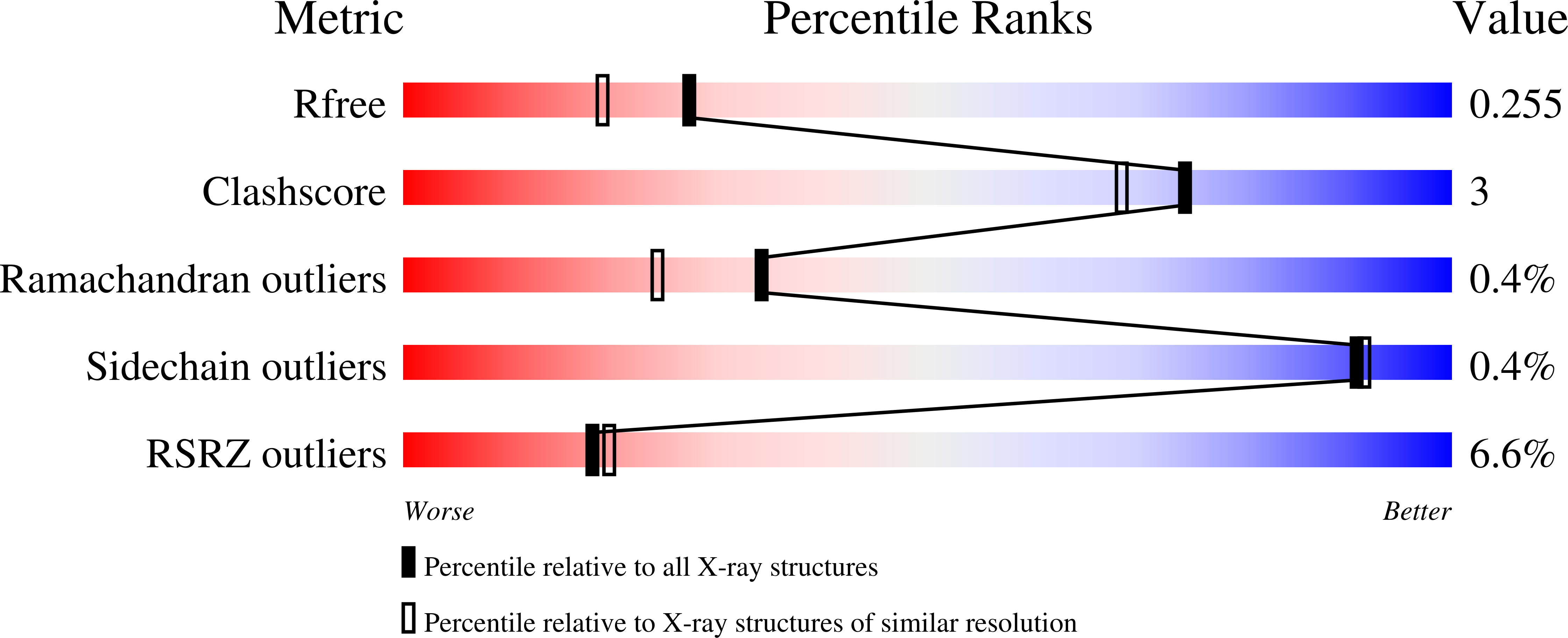Conformational plasticity of glycogenin and its maltosaccharide substrate during glycogen biogenesis.
Chaikuad, A., Froese, D.S., Berridge, G., von Delft, F., Oppermann, U., Yue, W.W.(2011) Proc Natl Acad Sci U S A 108: 21028-21033
- PubMed: 22160680
- DOI: https://doi.org/10.1073/pnas.1113921108
- Primary Citation of Related Structures:
3Q4S, 3QVB, 3RMV, 3RMW, 3T7M, 3T7N, 3T7O, 3U2T, 3U2U, 3U2V, 3U2W - PubMed Abstract:
Glycogenin initiates the synthesis of a maltosaccharide chain covalently attached to itself on Tyr195 via a stepwise glucosylation reaction, priming glycogen synthesis. We have captured crystallographic snapshots of human glycogenin during its reaction cycle, revealing a dynamic conformational switch between ground and active states mediated by the sugar donor UDP-glucose. This switch includes the ordering of a polypeptide stretch containing Tyr195, and major movement of an approximately 30-residue "lid" segment covering the active site. The rearranged lid guides the nascent maltosaccharide chain into the active site in either an intra- or intersubunit mode dependent upon chain length and steric factors and positions the donor and acceptor sugar groups for catalysis. The Thr83Met mutation, which causes glycogen storage disease XV, is conformationally locked in the ground state and catalytically inactive. Our data highlight the conformational plasticity of glycogenin and coexistence of two modes of glucosylation as integral to its catalytic mechanism.
Organizational Affiliation:
Structural Genomics Consortium, Old Road Research Campus Building, Oxford, United Kingdom OX3 7DQ.
















